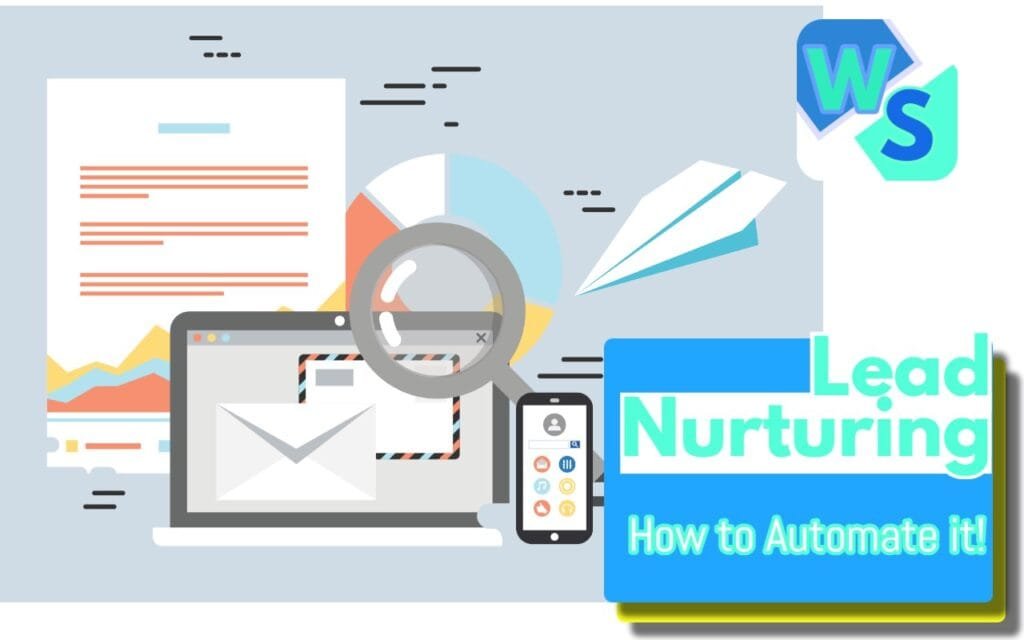Understanding Marketing Metrics
Marketing performance metrics are like the secret sauce for figuring out what’s working and what’s not in your marketing game plan. Those numbers aren’t just there for decoration; they’re what CEOs, business owners, and marketing executives use to see if all their hard work is paying off and how to tweak it for even better results.
Importance of Metrics
Metrics are the backbone of any good business strategy—they’re the hard facts that let companies take a long, hard look at how they’re marketing. With these numbers, they can spot what’s killing it and what’s flopping. Plus, by breaking it down into digits, marketing folks can keep themselves accountable and ensure they’re hitting those targets that everyone upstairs is pushing for.
With solid metrics in hand, companies can decide where to throw their money, when to switch up their campaigns, and how to plan for world domination. Numbers also spill the beans on what customers are into, letting marketers craft messages that hit home. By zeroing in on success with key performance indicators (KPIs), businesses can boost their marketing ROI and keep that growth train rolling.
Utilizing Leading and Lagging Indicators
In the world of marketing metrics, leading and lagging indicators each have their own vibes. Leading indicators are like the crystal ball for companies, showing trends and what might be around the corner. Metrics like website clicks and how much love you’re getting on social media can hint at future sales (BMC).
On the flip side, lagging indicators are all about looking in the rearview mirror to see how past efforts panned out. Think sales figures, keeping customers around, and the bottom line (BMC).
A smart marketing strategy uses both types. Lagging indicators tell you what’s already happened, while leading ones give a sneak peek into the future. This combo helps businesses nail their performance evaluation and tweak their strategies for even better results. For instance, noting customer drop-off as a lagging indicator can guide retention strategies, improving ROI (Webbiquity).
| Indicator Type | Definition | Example Metrics |
|---|---|---|
| Leading Indicators | Predict future moves | Website hits, social media buzz |
| Lagging Indicators | Reflect the past | Sales jump, customer stickaround rate |
Weaving both leading and lagging indicators into your strategy ensures the best tracking and adjustment, keeping your business on the up and up. For more on getting KPIs to work for you, dig into key performance indicators in marketing to see what’s cooking.
Key Metrics for Digital Marketing
Tracking success in the digital marketing world is a big deal for CEOs and marketing folks who want profits to soar. Imagine these metrics as your tools for a deep dive into how things are working. We’re checking out important stuff: how many folks pop by your site, how loud your brand’s voice is, whether folks are even opening those emails, who’s tuning into your social media chatter, and how often they take the bait on clicking those links.
Total Visits
Total visits is like a headcount of how many folks stroll through your online space. This number is your street cred in the virtual world. If you’re seeing waves of people, it means you’re doing something right. Figuring this out helps businesses know what content hits the spot and guides tweaks for even better turnout.
| Metrics | Description | Importance |
|---|---|---|
| Total Visits | Number of users visiting web properties | Shows how appealing and engaging your site is |
Curious for more? Dig into measuring marketing effectiveness.
Brand Awareness
Brand awareness is the secret sauce for winning the marathon, not just the sprint. Through surveys and keeping an eye on social media buzz, marketers get the lowdown on how familiar folks are with their brand. Strong brand awareness doesn’t just attract—it sticks. People become loyal fans more easily when they know what you’re about.
| Metrics | Description | Importance |
|---|---|---|
| Brand Awareness | How well potential customers recognize your brand | Critical for building lasting marketing success |
Get the full picture on marketing financial planning.
Open Rate in Email Marketing
In email marketing, the open rate gives a peek into how many of those emails actually get noticed. It’s like having a spotlight on your email subject lines and crafting messages that folks actually care to read. Higher open rates are the victory dance of successful email strategies.
| Metrics | Description | Importance |
|---|---|---|
| Open Rate | Percentage of opened emails against sent emails | Indicates how well your emails engage recipients |
Learn a thing or two in marketing campaign analysis.
Social Media Reach
Social media reach counts how many pairs of eyes have seen your posts or ads. When you know this, you can measure engagement and conversion magic. It’s about understanding how impactful your social hustle really is.
| Metrics | Description | Importance |
|---|---|---|
| Social Media Reach | Total number of unique users exposed to content | Critical for assessing campaign outcomes |
Get clued up with our piece on tracking marketing performance.
Clickthrough Rate (CTR)
Clickthrough rate (CTR) tells you what share of folks who saw your content actually took action by clicking. A high CTR can be the holy grail in PPC campaigns, offering lower costs and better ad spots. It’s a direct line into understanding what grabs people’s attention and prompts interaction.
| Metrics | Description | Importance |
|---|---|---|
| Clickthrough Rate (CTR) | Percentage of clicked links versus views | A vital sign of ad success and interaction |
For more on juicing up your marketing returns, check marketing return on investment.
With these metrics in their toolkit, marketing pros can dial in their strategies to boost performance and drive the business forward.
Campaign Analytics
Campaign analytics is like the secret weapon marketers wield to sharpen their strategies and get the best bang for their buck. By diving into the numbers, businesses can see what makes their audience tick and figure out where they need to tweak their game plan.
Precision in Targeting
One cool perk of campaign analytics? It helps you zero in on the right folks with pinpoint accuracy. You get a peek inside the audience’s world—what they dig, how they roam, and what catches their eye. With this info, marketers whip up campaigns that hit all the right notes. It’s like knowing exactly what your uncle wants for his birthday, so you nail the gift every time. No missed opportunities here (Improvado).
| Insight Type | What’s the Deal? |
|---|---|
| Audience Behavior | See how different groups play with your stuff. |
| Preferences | Spin those messages and deals just right. |
| Engagement | Find out which peeps are vibing with your campaigns. |
Budget Optimization
Wanna make sure you’re not throwing money down the drain? Dive into the analytics! They show which campaigns are crushing it and which are flopping. By focusing resources on the winners, you make every dollar count and pump up that return on investment (Improvado).
| Campaign Vibes | What to Do |
|---|---|
| High-Performing | Pump up the budget, more eyes on deck! |
| Underperforming | Time to rethink—or maybe switch focus. |
| Break-even | Keep an eye, maybe give it a nudge. |
Continuous Monitoring and Adjustment
Keeping tabs on your marketing strategies is the name of the game for long-term wins. Campaign analytics gives marketers the power to tweak things on the fly. This ongoing tinkering ensures your campaigns stay on point and living in the now (Improvado).
| Peek-At | Why It Matters |
|---|---|
| Real-Time Analysis | Ready to roll with the punches. |
| Metric Tracking | Keep eyes on those goalposts. |
| Strategic Adjustments | Shake things up to stop them going stale. |
Content-Type Analysis
Ever wondered why one piece of content totally flops while another goes viral? Analytics spill the beans on which content styles—be it blog snaps, lively vids, or sassy infographics—hit home with your audience. Use this juicy intel to craft content that clicks and boosts campaign success.
| Content Type | How’s It Playing? |
|---|---|
| Blog Posts | Eh, so-so. |
| Videos | Bringing in the heat! |
| Infographics | All over the map. |
By harnessing these insights, big cheeses like CEOs and sharp marketers can steer their ships towards performance paradise. Efficient targeting, smart spending, constant course corrections, and content know-how all help in nailing marketing goals. For more on juggling those marketing dollars and smashing targets, check out marketing budget planning and measuring marketing effectiveness.
Significance of Performance Metrics
Grasping performance metrics is critical for CEOs and anyone calling the shots in marketing who want to boost business success. Keeping tabs on measures like impressions, click-through rate (CTR), conversions, and cost per conversion lets you evaluate how marketing efforts are shaping up.
Impressions
Impressions count how often campaign content pops up on screens, be it a website or an app, aimed at fresh or regular customers. This metric gives a sense of how far and wide your message is traveling. But remember, impressions don’t sort out if a real person or a bot viewed your stuff, and bots make up about 40% of online traffic these days (Funnel). By tallying up impressions, firms glimpse the visibility rate of their campaigns.
| Metric | Definition |
|---|---|
| Impressions | Total appearances of content (bot or human viewing included) |
Click-Through Rate (CTR)
Click-through rate (CTR) shows how well your content grabs attention. It’s the number of clicks compared to how often your content gets seen. This helps judge if what you’re putting out there resonates with your audience. Like in 2022, a wee 3.17% clicked on Google ads they were shown (Funnel). A jacked-up CTR points to spot-on targeting and magnetic content.
| Metric | Calculation |
|---|---|
| CTR | (Clicks / Impressions) x 100% |
Conversions
Conversions add up the folks taking that step you’ve been nudging them towards—be it buying something or signing up for a newsletter. This metric is a straight-up reflection of a campaign’s hit on ROI. Apps like Google Analytics can keep tabs on conversion goals, giving you the scoop on whether your marketing maneuvers are hitting the mark (Funnel).
| Metric | Definition |
|---|---|
| Conversions | Number of people following through on a desired action |
Cost Per Conversion
Cost per conversion shows the bang you’re getting for your buck in your digital escapades. It tells you the average expense needed to seal a conversion deal. Checking this number helps highlight campaigns bringing home the bacon and those falling flat. Digging into cost per conversion offers ways to tweak your pitch, spruce up visuals, refine call-to-action spots, or makeover landing pages to galvanize lagging campaigns (Funnel).
| Metric | Definition |
|---|---|
| Cost Per Conversion | Average spend to land a single conversion |
By diving into these performance metrics, businesses can make smart decisions that affect their financial outcomes directly. Whether it’s refining marketing tactics or gauging the success of campaigns, these metrics arm you with insights key for climbing the growth and success ladder. Grasping how to track these metrics takes on a pivotal part in measuring marketing effectiveness and smart marketing financial planning.
Maximizing Marketing ROI
Getting the most bang for your buck can make or break a business. And to do that, it’s all about keeping an eye on those essential marketing goals.
Return on Ad Spend (ROAS)
ROAS is like the report card for your ad dollars. It’s what you get back compared to what you shelled out. So, take your revenue and divide it by your ad spend. If that number’s more than one, you’re in the sweet spot – your ads are bringing in more than they cost. This info is gold for making smart choices about where to aim your ad bucks next (Funnel).
| Ad Spend | Revenue Made | ROAS |
|---|---|---|
| $1,000 | $5,000 | 5.0 |
| $2,000 | $6,000 | 3.0 |
| $500 | $1,500 | 3.0 |
Getting a handle on ROAS means you learn to tweak your ad spend to juice up those returns.
Marketing Metrics Evaluation
You gotta measure if your marketing stunts are working. Keeping track of your marketing scorecard is key to figuring out where you’re nailing it or falling flat (Amazon Advertising). Dive into those numbers regularly, and you’ll spot what’s working, what’s not, and where to tweak for better business mojo.
Think about total visits, how folks interact with your stuff, and how many are turning into customers. Getting this right informs better decisions and more effective marketing moves.
| Metric | Now | Goal | How’s It Going |
|---|---|---|---|
| Visits | 10,000 | 15,000 | Needs Work |
| Engagement | 5% | 7% | Needs Work |
| Conversion | 10% | 15% | On Track |
Lead Generation and Conversion Rate
Leads and conversions are the heartbeat of digital ad gigs. Leads are the newbies you’re pulling in, and conversion rate is how many actually turn into business. Say your campaign hooks 1,000 eyeballs and lands 100 leads, that’s a 10% conversion rate (Invoca).
Tracking these stats gives you the goods on how sharp or blunt your campaigns really are. You also wanna compare CLV to what it costs to grab a customer (CAC) to really see if you’re on the money (Amazon Advertising).
| Campaign | Visitors | Leads | Conversion Rate |
|---|---|---|---|
| A | 1,000 | 100 | 10% |
| B | 1,500 | 150 | 10% |
| C | 2,000 | 180 | 9% |
Specific KPI Monitoring
Zeroing in on KPIs – those little engines of success – is how you know if you’re hitting or missing. KPIs should sync with what you’re trying to achieve with each ad escapade. Watch them like a hawk so you’re never caught off guard if things go sideways (Amazon Advertising).
| KPI | Current | Target | Status |
|---|---|---|---|
| Brand Awareness | 30% | 45% | Needs Work |
| Click Through Rate (CTR) | 1.5% | 2.5% | Needs Work |
| Customer Retention Rate | 75% | 80% | On Track |
Keeping these on your radar helps fine-tune what you do to boost performance and, with any luck, fatten that wallet. Get more on understanding the dance of metrics here.
Impact of Analytics Strategies
Who knew that crunching numbers could make such a difference? In this fast-paced market, smart folks use clever analytics tricks to boost their business mojo. Picking apart customer habits and making savvy marketing choices, they’re raking in the dough.
Integrated Marketing Analytics
Time to pull out the big guns! With integrated marketing analytics, businesses dive into a pool of data from all their promotional shenanigans. This deep dive reveals how each bit of marketing magic performs. It’s like having a crystal ball for seeing which strategies click when they work together. Want to get the down-low on those fancy key performance indicators? Mosey on over to our section on key performance indicators in marketing for the juicy details.
Marketing Mix Modeling (MMM)
Marketing Mix Modeling, or MMM (for those hip to the lingo), is like a secret weapon powered by AI. It’s the ultimate magnifying glass for a company’s marketing spend. Big shots like Coca-Cola use it to make every cent count, both online and off (Polestar). Think of it as a cheat sheet to figure out what’s making that cash register sing and what’s just clanging cymbals.
| Key Benefits of Marketing Mix Modeling |
|---|
| Spills the beans on marketing magic across the board |
| Helps shuffle resources like a deck of cards |
| Let’s you plan future escapades with savvy smarts |
| Squeezes every drop out of marketing dinero |
Generative AI in Marketing
Generative AI is the new kid on the marketing block, shaking up how businesses chat with customers. Over 70% of marketing head honchos are jumping on this futuristic bandwagon, using it for everything from tailoring ads to dreaming up new ideas. It’s a recipe for creating conversations that actually matter—and getting those sale bells ringing.
Utilizing AI for Personalization
Who doesn’t love a little personal touch? AI is like your personal shopper, picking out just the right messages and deals for each customer. Crunching data to tailor experiences means people stick around longer and are more likely to whip out their wallets. Companies can target like a dart player hitting bullseyes, and they keep tabs on how well it works. Curious about the nitty-gritty? Check out our piece on measuring marketing effectiveness.
Pouring resources into analytics strategies means businesses aren’t just throwing spaghetti at the wall. Instead, they’re working with a laser focus that turns data gold-mines into growth engines, sparking their success to new heights.
Leading and Lagging Indicators
Grasping the ins and outs of leading and lagging indicators can supercharge the way you gauge marketing chops and map out strategies for tomorrow.
Shaping Performance
Leading indicators are the daily hustle drivers that peek into the future. They’re like your business crystal ball, giving you a heads-up on trends so you can tweak strategies before things go sideways. Pay attention to customer interaction numbers and how your campaigns are landing. By zeroing in on these bits, companies can stay ahead of the curve and boost their game plan to get better results.
Customer Retention Strategies
Lagging indicators are like your business report card showing how you did, covering things like sales booms and who stuck around. They’re great for sizing up how you’re keeping customers in your corner since they shed light on churn rates and how folks are feeling about your business. Many outfits face the churn monster (Webbiquity). Keeping tabs on this stuff helps you tweak your game plan to hold onto customers and make your marketing spend count even more (marketing return on investment).
| Metric | Description | Example |
|---|---|---|
| Churn Rate | Percentage of customers lost over a period | 5% monthly churn |
| Retention Rate | Percentage of existing customers retained | 95% quarterly retention |
Customer Acquisition Costs
The dough it takes to win over new customers is another lagging number you gotta track to beef up ROI. Knowing this number is like having a guidebook to nab new customers without breaking the bank. Pore over the cost per new customer, and you can tweak marketing spends to get more bang for your buck. When you keep a keen eye on these costs, it makes budgeting a whole lot smoother (marketing budget planning).
Net Promoter Score (NPS)
The Net Promoter Score (NPS) is a leading light that clues you into how chuffed and loyal your customers are. It’s all about asking them how likely they are to give your service a shoutout. A solid NPS means happy customers who’ll stick around with your brand. A rocking score can majorly jazz up marketing efforts through word-of-mouth magic.
| NPS Score Range | Customer Sentiment |
|---|---|
| 0 to 6 | Detractors |
| 7 to 8 | Passives |
| 9 to 10 | Promoters |
Renewal Rates
Tracking renewal rates gives you a read on how past marketing campaigns worked out, especially for subscription-based businesses like SaaS companies. If droves of customers are renewing, it means you’ve got a lock on keeping people happy and sorted (Webbiquity). Watch these rates to sharpen future marketing and keep businesses on a roll.
| Business Type | Typical Renewal Rate |
|---|---|
| SaaS | 90% or higher |
| Subscription Box | 70% – 80% |
Getting a handle on these leading and lagging numbers lets business top dogs create sharper strategies for growth and customer loyalty. For more juicy details on key performance indicators in marketing, dive into detailed resources that spill the beans on metrics and analysis to amp up your marketing mojo.





















